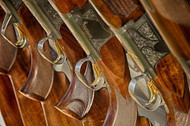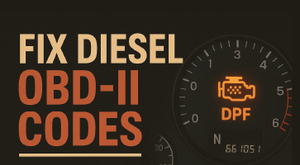The Evolution of Firearms: From Hand Cannons to 3D Printed Hand Guns
By on Sep 01 2017
Whether you belong to a shooting range and practice regularly or grew up hunting seasonally, you likely have developed an opinion of some sorts on guns. Whatever that opinion might be, there’s no denying that the advances of these machines had been great over the years.
From old fashioned hand cannons to 3D printing, we’re exploring the evolution of firearms over the years.
Firing through Time: Technological Advances Leading up to Contemporary Guns
The earliest recorded use of firearms dates back to 1364. Hand cannons utilized a wick that would ignite the powder in the gun, launching the bullet inside.
Matchlock guns, which came about in the 1400s, really launched the evolution of guns. These were the first versions to utilize mechanics within to project bullets. These, reflecting the type of guns used in Colonial America, are extremely rare to find today.
Then, the concept of rifling was discovered in the late 1490s. This involved ridges that were carved into the inside of the barrel in a spiral pattern that would cause the bullet to spin as it ejected. This improved accuracy in aim.

Then came the wheel lock in the early 1500s, which utilized a steel wheel to create a spark that would ignite the gun’s wick. These guns were expensive to make though, and people kept to the matchlock guns despite the advancements and benefits of the wheel lock models.
Flintlocks were developed in the early 1600s, solving a huge problem. The flintlock pushed back a lid while creating a spark that would light the gunpowder at the same time. This was such a big change, and a good one, that it remained untouched for a long while—nearly two centuries.
If you’re a Hamilton fan, you’re well aware of the importance of dueling around the time of the American Revolution. Dueling pistols came into popularity in 1750, lasting until 1850.
Precision gun caps were developed in the 1800s, eliminating the need for flash pans. Mercuric fulminate, an extremely explosive material, was utilized to ignite gunpowder in the barrel.
During this time, mass production of guns made them more affordable than ever before.
The first mass-produced, multi-shot, revolving firearms were made by Samuel Colt (all my Supernatural fam friends… I see you). He was the first person to utilize the machinery of the Industrial Age to produce guns, producing the first Colt revolver in 1835.
Pin-fire cartridges were introduced in 1840, followed by shotguns in 1850. The Spencer repeating carbine; rear-loading guns, also known as breech-loading; and the Gatling Gun, known as the precursor to the modern machine gun, were introduced in the 1860s, making the 1800s a big century for guns.
The famous Winchester rifle came about in 1873 (hi again, SPN Fam!), and they again made history in 1903 with the first automatic rifle. But before that, the first automatic pistol emerged in 1892, created by Joseph Laumann. From then on out, automatic weapons became regularly used.
Fast forward a little bit and we settle on 3D printed handguns, which are under development and are being made today. The 1900s on started the contemporary period of guns—the ones we know, use, and love today.
Caring for Your Firearms
As with anything, proper care of your firearms will ensure that they last longer and work better. It’s in good practice to regularly clean and lubricate yours, especially after use.
When it comes to the question of when to do the cleaning, after each used is often the answer. This will help to ensure that your gun continues to work properly and will help you to better identify and pinpoint and issues that might arise, and is especially true for handguns. These should be cleaned and lubricated as soon after use as possible.
Shooting a dirty, unlubricated gun can lead to malfunctioning and damage. If they are shot often, keep the cleaning regular. If a longer period of time passes between uses, just be sure that it’s cleaned and lubricated properly before it’s put away.
Always be sure that you know how to properly disassemble and reassemble your gun for proper cleaning and lubricating. Gun safety is key here, so make sure you know your stuff and practice safety whenever handling a weapon. Also--this should go without saying--but keep the ammo in another room entirely. This will just up the safety level for you when you're cleaning.
Things you'll typically need to complete a thorough cleaning of your gun include a solvent that will remove lead and powder fouling, a good quality lubricant, and a few tools to make sure that cleaning and lubricant application are done properly.
Looking for a gun lubricant? Try WD-40, and learn about its development here!
And be sure to check out Gunk’s Liquid Wrench Super Lubricant! This handy product lubricates and protects not only your gun but a number of other household products!
Sources:
http://www.pbs.org/opb/historydetectives/technique/gun-timeline/
http://www.theblaze.com/news/2013/03/12/the-history-and-evolution-of-guns-as-told-through-pictures/
http://www.armsbearingcitizen.com/taking-care-of-your-weapons-how-to-keep-your-guns-good-as-new/
http://www.gunsandammo.com/home-featured/ga-basics-how-to-clean-your-handgun/







